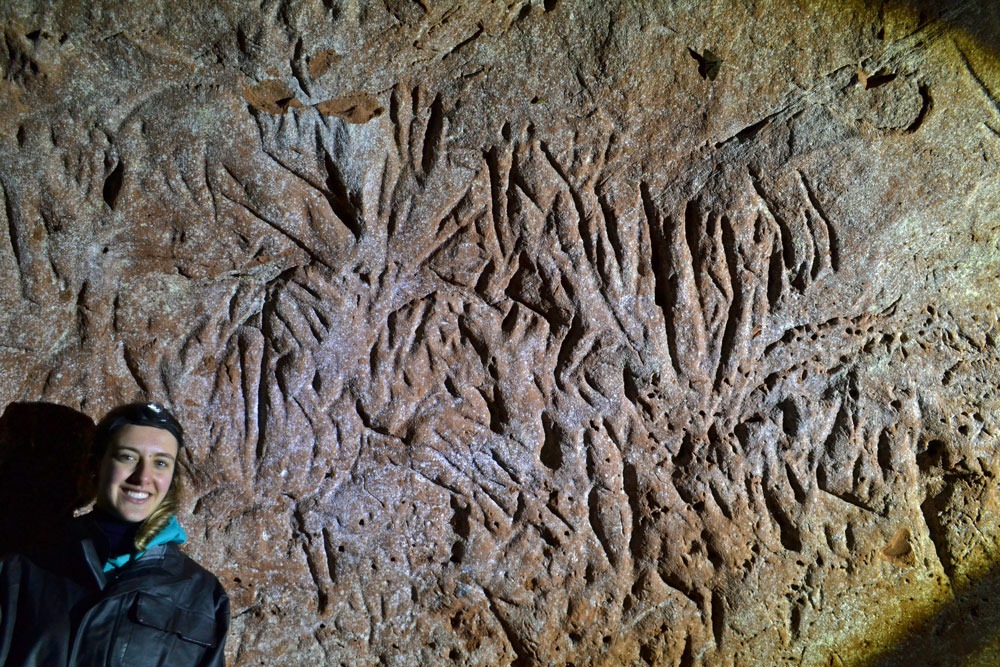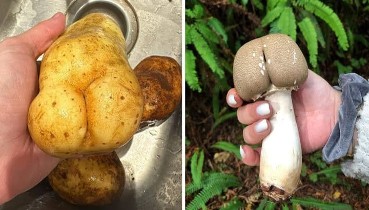
A giant mammal that lived 10,000 years ago in Brazil dug gigantic tunnels called “palaeoburrows”. And digging those tunnels required claws. Huge ones.
A giant mammal that lived 10,000 years ago in Brazil dug gigantic tunnels called “palaeoburrows”. And digging those tunnels required claws. Huge ones.
What could have left those giant claw marks? Image credit: Heinrich Frank
But what could those giant creatures be? That was exactly the question geology professor Heinrich Frank asked himself while crawling through a mysterious tunnel uncovered at a construction site in Novo Hamburgo, Brazil.
Since it was unlike any geological formation he’d ever seen, Frank speculated that the tunnel must have been dug out by a living thing.
“There’s no geological process in the world that produces long tunnels with a circular or elliptical cross-section, which branch and rise and fall, with claw marks on the walls,” Frank told Discover.
Whatever the enormous creature was, it left huge claw marks across the walls and ceiling of this tunnel and others of similar size found in the area. At that point, the professor slowly backed out and told the construction workers he’d be back in a few weeks.
Frank, who works as a professor at the Federal University of Rio Grande do Sul, kept his promise. He ended up naming the mysterious tunnels and identifying the animal most likely to have done the excavations, not only of the tunnels in Novo Hamburgo but also thousands of others in Brazil.
Frank found his first tunnel in the early 2000s and learned that another scientist had coined the name “palaeoburrows” for them. When he couldn’t come up with an explanation for their existence, this made him look for further tunnels to eventually figure out the truth. As of today, Frank and other researchers have found over 1,500 tunnels in the state of Rio Grande do Sul alone, as well as hundreds more in Santa Catarina. Many of these tunnels stretch for hundreds of feet and have numerous branches, and the largest one is a whopping 2,000 feet long, six feet tall and up to five feet wide!
“In these burrows, sometimes you get the feeling that there’s some creature waiting around the next curve – that’s how much it feels like a prehistoric animal den, ” Frank wrote.
Eventually, he did find enough evidence to convince him that the paleoburrows were most probably dug by the giant ground sloth, the second-largest prehistoric land mammal next to the mammoth. The primary evidence is the deep claw marks found by Frank on the walls of paleoburrows, like the ones you see on the first picture above. Most scientists now agree that they could only have been made by a giant ground sloth (Megatherium), and not by smaller giant armadillos as some others have suggested.
Advertisements



